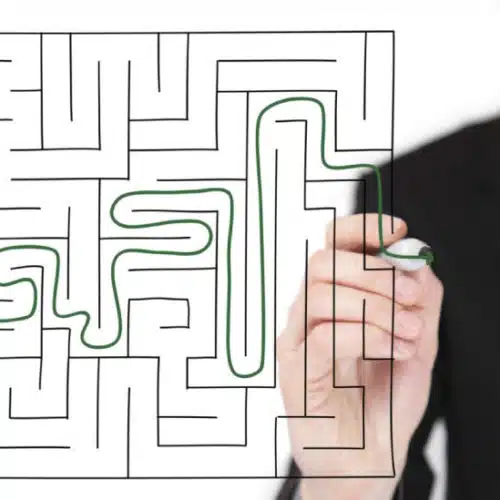Financial Strategies for Small Business: Navigating Cash Rate Changes for Better Profitability
When we speak of the cash rate, we’re talking about the interest rate that banks charge each other.
This rate is set by the Reserve Bank of Australia (RBA), so it can influence the economy in big ways. For instance, it affects how much it costs for the banks’ customers, including small businesses, to borrow or earn interest on their savings.
For small businesses, changes in the cash rate can affect everything in their operations—from the day-to-day costs of running a business to planning for the future. Cash flow refers to the movement of money in and out of a business, and managing it effectively is crucial for maintaining liquidity and overall financial health. Not to mention it can impact a business owner’s ability to secure loans or the profit they make from their savings.
So, even the small change in the cash rate can have a monumental impact on a business. That’s why it’s important to regularly review your financial statements, such as income statements and balance sheets, to monitor your business’s financial health and make informed decisions.
This may sound scary, but don’t fret.
In this article, we feature five clear, actionable strategies to help you navigate the effects of cash rate changes. This way, your business can stand the test of time.
The Five Strategies
Strategy #1: Have Flexible Financial Planning
Think of flexible financial planning as your business’s navigation system. With it, you can adjust your course as economic conditions change—including cash rate changes. Many businesses create and routinely update their financial plans to stay competitive and adapt to changing market conditions.
One of the most fundamental ways to plan for financial flexibility is to do regular check-ins on your finances. These check-ins not only help you stay on track but also ensure your financial plans are aligned with your overall business plan.
For instance, when interest rates dip, try and secure those lower rates for the long haul. You can also jump on expansion plans. But when rates start rising, focus on paying down debt and trimming unnecessary costs. Tweaking your budget and goals as needed helps you stay focused on achieving your business goals.
Don’t forget to set up a safety net, too. A contingency fund is key here, as it will allow you to face higher interest rates without pinching pennies.
With a flexible approach to financial planning, you ensure you’re staying two steps ahead. Regularly updating your financial plans is an essential part of ongoing financial management, giving your business a greater chance to survive and thrive no matter the economic weather.
Strategy #2: Diversify Your Sources of Financing
As they say, don’t put your eggs in one basket.
Financial diversity opens you to a world of opportunities. In particular, multiple sources of finances can give you a steady cash flow regardless of the economic changes that affect cash rates.
But how can you have a diverse source of funds?
Start by checking out the grants and subsidies designed for small businesses. They often include extra perks for business owners and expert guidance alongside the funding.
Crowdfunding is another way to rally your community’s support. Here, you turn your customers into your financial backer. Aside from getting funding, you build a strong bond with them as you grow your business. Also look into investors who are eager to invest their money.
Don’t forget to explore various financing options and broaden your relationships with banks, too. This way, you’ll have access to different financing options such as bank loans, lines of credit, and business credit cards. Working with a trusted service provider can help you identify the best financing options for your business. Having options means you can always find the best deal for your business’s financial needs.
Remember, the wider your financial network, the more support you’ll have. Especially when there are cash rate changes that massively impact your business.
Strategy #3: Optimise Debt and Cash Flow Management
When cash rates shift, the cost of your debt can change, too. And this can affect how much you’ll need to pay back.
Managing debt is all about having a solid grip on your finances. Meeting your financial obligations on time is crucial to maintaining your business’s stability and reputation. It’s all about ensuring that you can navigate any financial situation your business faces, such as cash rate changes.
For optimised debt management, start by reviewing all your current debts. Identify which ones cost you the most in interest. Focus on paying off the most expensive debts when rates start rising. And when rates are low, it might be the perfect time to refinance high-interest loans.
Also, paying more than the minimum required on your loans can help cut down the interest you pay over time. It will also free up more cash for you to use elsewhere in your business.
Don’t forget to track your credit score, too. A healthier credit score can unlock better cash rates and terms, which can go a long way in your business.
Debt management is all about strategic planning and making your debts work for you, not against you.
Strategy #4: Build a Cash Reserve
Think of building a cash reserve as setting up a financial safety net for your small business. One that gives you a financial cushion to absorb shocks without getting external funding. Especially when there are changes in the cash rates.
This is all about being prepared for the unexpected..
To build your business’s cash reserve, begin by setting aside a small, manageable part of your monthly profits. Treat it as a non-negotiable expense; a way to protect your business for rainy days ahead.
You can also look into automation to make it easier to grow your cash reserves. Set it up so your bank, for instance, will automatically transfer a set amount of money from your business account to the savings account for your cash reserves.
Additionally, reassess your budget. Review your business expenses and other costs to identify savings that can be redirected to your cash reserve. Find opportunities to trim expenses and redirect what you save into your cash reserve. Remember, those small savings can add up over time and add up to your financial buffer.
Having a cash reserve is about ensuring your business’s resilience no matter the economic climate and cash rate changes.
Strategy #5: Ensure Cost Control and Efficiency
This is all about making every dollar work for your business. Keeping your costs under control and boosting business efficiency ensures a good financial state even when changes in the cash rate threaten business profitability.
But how do you make it happen?
Start by doing a thorough review of your current expenses. Look for any areas in your business where you can cut back on costs without compromising quality or productivity. Controlling costs in this way can directly improve your profit margins by reducing unnecessary spending.
Also consider embracing technology to streamline operations and automate time-consuming tasks. Look into using tech like cloud-based accounting software and various digital marketing tools.
Monitoring your financial performance regularly helps ensure that your cost control measures are effective and allows you to make informed adjustments as needed.
Make sure to discuss with your team how you can decrease costs and have a more efficient business. After all, they know your operations best.
Cost control and efficiency isn’t just about saving money but investing in your business’s future success. Successful small businesses achieve long-term success through effective cash flow management and disciplined cost control, allowing them to remain resilient and adaptable.
Strategy #6: Strengthen Inventory Management and Control
For small business owners, strengthening inventory management and control is a powerful way to maintain healthy cash flow and eliminate unnecessary costs. Effective inventory management means keeping a close eye on your stock levels, monitoring customer demand, and setting smart reorder points. This helps you avoid the pitfalls of overstocking—which ties up cash and leads to extra storage costs—or understocking, which can result in missed sales and unhappy customers.
By implementing a reliable inventory control system, you can identify trends in your sales and make informed decisions about what to order and when. This not only helps bridge cash flow gaps but also ensures you have the right products available without holding onto excess inventory. Streamlined inventory management reduces the risk of delayed payments and overdue invoices, as you’re less likely to face cash shortages caused by unsold stock.
Regularly reviewing your inventory allows you to spot slow-moving items and take action before they become a drain on your resources. Whether it’s running a promotion or adjusting your purchasing strategy, these informed decisions help maintain positive cash flow and support long term business success. Ultimately, strong inventory management empowers small businesses to operate more efficiently, reduce unnecessary costs, and stay resilient in a changing market.
Strategy #7: Optimise Payment Terms for Better Cash Flow
Optimising payment terms is a crucial step for small businesses aiming to improve cash flow management and reduce financial stress. By offering multiple payment options—including online payment platforms—you make it easier for customers to pay promptly, which can encourage early payments and reduce the risk of late payments. This steady stream of incoming cash helps you cover operational costs and invest in business growth.
Negotiating favorable payment terms with your suppliers is another smart move. Consider extending payment deadlines, lowering interest rates, or setting up a flexible repayment plan to better align your cash inflows and outflows. These adjustments can minimize overhead costs, reduce reliance on high interest debt, and free up resources for essential expenses.
Optimising payment terms also helps you build stronger relationships with suppliers and service providers, which can lead to better deals and more reliable support. By regularly reviewing your payment terms and monitoring key financial metrics, you can identify trends in your business finances and make informed decisions that support long term success.
Incorporating these practical strategies into your financial planning will help your small business maintain a healthy cash flow, reduce financial strain, and position you for sustainable growth—even as market conditions and interest rates change.
Have a Profitable Business for Small Business Owners Despite Cash Rate Changes
Economic changes don’t have to negatively impact your business.
Since we’ve explored five key strategies to help your small business adapt to and thrive amid cash rate changes, it becomes easier for you to steer your business in the right direction.
Your business now has a greater chance of remaining robust amid economic shifts.
As your business grows, consider consulting a financial advisor for professional advice. A financial advisor can help you monitor your business’s financial health and adapt your strategies to support continued growth and stability.
If you need further assistance in ensuring business profitability no matter the current cash rate and economic climate, Unsecured Finance Australia is here to help. Apply online and you can receive your approval within 24 hours.
Find out more by taking a look at our unsecured business loans.




